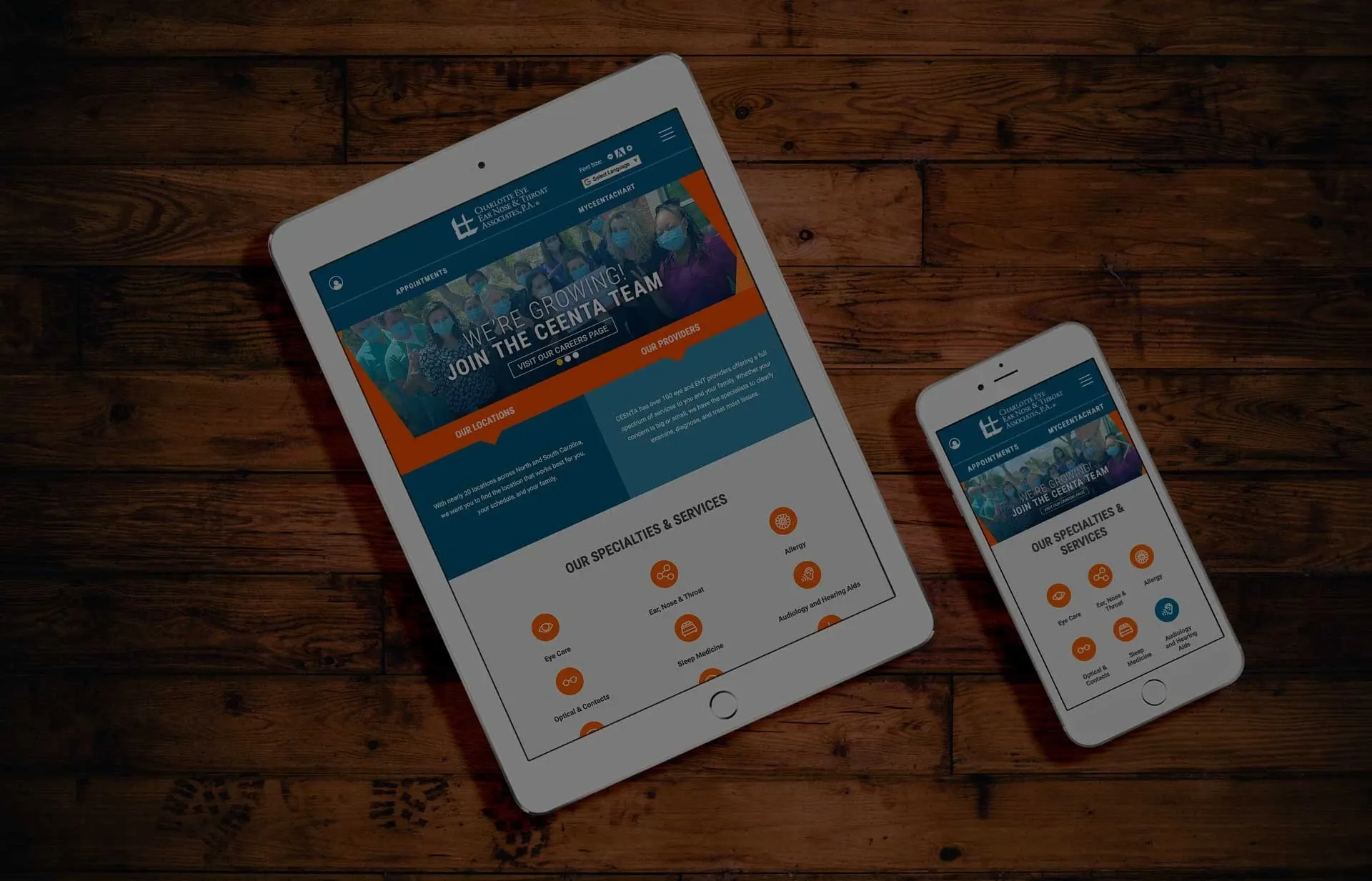
Digital accessibility is becoming a major proponent of websites and digital applications within the healthcare and medical industry. The rise of digital accessibility within healthcare is largely due to the vast improvements in recent technology within accessibility and also due to inclusivity as a whole being on the rise across the nation. Digital accessibility and inclusion are social responsibilities that many healthcare organizations are getting behind to cater to all site visitors and users. We can't forget to mention too that COVID-19 is a large part of accessibility rising within healthcare in recent years since everyone needs to be able to access healthcare information online and book appointments both virtually and in-person.
What is Digital Accessibility?
From Wikipedia, "web accessibility is the inclusive practice of ensuring there are no barriers that prevent interaction with, or access to, websites on the World Wide Web by people with physical disabilities, situational disabilities, and socio-economic restrictions on bandwidth and speed. When sites are correctly designed, developed and edited, more users have equal access to information and functionality."
What standards should your website have to ensure it is compliant with ADA standards and easily accessible to all? We've compiled a list of just a few things to keep in mind when accounting for an accessible interface. Keep in mind, all of these items are constantly being improved upon and so it is always best to check with ADA.gov for the most up-to-date information and resources out there.
Clear Navigation Structure
- Don't leave any guessing as to what your main navigation links are and the hierarchy of the links after those. For example, you want to make sure it is clear how to get to the main parts of your website. Doing so will make it fast and easy for a patient to pay a bill online or for a potential employee to apply for a job at your clinic.
- Navigation Tip: Make sure your logo links back to your homepage since this is intuitive for most users, despite website comfort level.
Mobile-Friendly UX Design
- Ensure your website is mobile-friendly from the very start by accounting for the most crucial information to be at the top of the screen. The less important information should be further down or even taken away completely. Be sure to always practice content over design when on mobile for faster load times and reducing elements that might get in the way of pertinent information.
Text Legibility & Header Descriptions
- The text should be legible on all devices so making sure it is large enough and clear on each screen is crucial. Be sure to also break up large chunks of text with paragraph titles or header tags which helps the reader who likes to skim content find the exact information needed. Header tags are also great for those users who are visually impaired as they rely on these heavily when using the internet.
Keyboard Functionality
- Adding in basic keyboard functionality will help those users who choose to navigate a website this way whether it is by choice or because of a barrier of some kind. Users, with motor disabilities for example, traditionally use adaptive keyboards to browse the internet so if your site is not compliant with keyboards, you might be leaving out a whole demographic needing access to healthcare online.
Audio Alternative Option for Videos
- Add more accessibility options by incorporating an audio file of your video or a written out text transcript for those who choose to view information this way. Always allow for closed captioning on any video you put out there for those with hearing impairments.
Web Development Standards
- The ADA has come out with a list of basic web standards to follow to ensure your website is accessible to all. Many of these standards are required and healthcare organizations are beginning to become penalized for not taking these standards into account.
Inclusivity
- Inclusivity is a bit different than accessibility in that it doesn't target one specific group but just strives to make sure all groups are included and equally represented. This approach really goes beyond basic accessibility into the goal of making all people feel included, from all backgrounds to capture the full range of human diversity.
Image Alt Tags
- Image alt tags allow for a description of images on your website for those users with visual impairments. These users typically use a screen reader to understand website content. As an added bonus, using image alt tags helps with SEO improving search engine rankings.
Sources:
https://en.wikipedia.org/wiki/Web_accessibility
https://uxdesign.cc/starting-out-with-digital-accessibility-1130418a7110
https://www.usability.gov/what-and-why/accessibility.html
https://webaim.org/techniques/keyboard/
https://www.outsystems.com/blog/posts/digital-accessibility/
https://www.ada.gov/pcatoolkit/chap5toolkit.htm
https://www.microsoft.com/design/inclusive/
« Back to Blog
- How Healthcare Practices Can Improve Visibility in AI Tools Like ChatGPT, Copilot & Perplexity
- Rebuilding from the Ground Up: A Modern, SEO-Driven Website for Third Coast Oral & Maxillofacial Surgery
- Modernizing TOA.com: A Decades-Long Digital Partnership in Orthopedic Website Innovation
- The Future of Healthcare Marketing: AI, AEO, and a Compliance-First Strategy
- How to Use Schema Markup on Your Healthcare Website for Better SEO
One Partner - Every Digital Solution Your Practice Needs.
EHS is more than a vendor — we’re your long-term partner in building a stronger, smarter, and more compliant digital presence.

© 2025. All rights reserved. E-dreamz, Inc.

